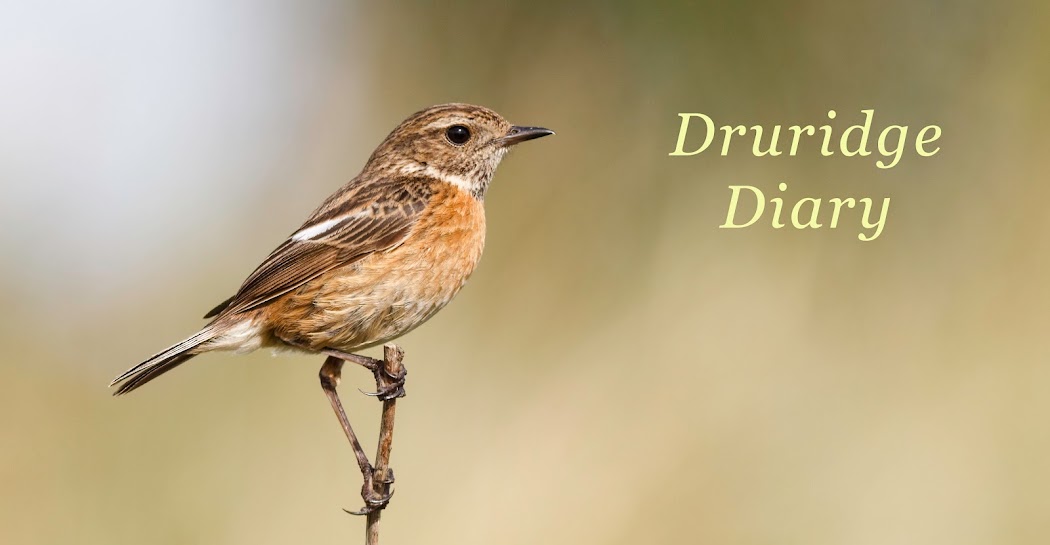I phoned the chap who had put out the message and he explained that the birds were just off Druridge Lane. I was there in seconds, leapt out of the car and was put onto the birds, on a wire over the fields, with a lot of starling and fieldfare - great birds but they nor me were on my patch.
I jumped back into the car and headed for the nearest patch boundary, which is just before High Chibburn Farm. But it was no use, I could hardly see the wires for the high hedge, I took my wellies off and climbed onto the car, extending my tripod as far as it could go, but I couldn't pick out the birds. Frustrated I headed back the original spot, but there was no sign of the birds. I ate my pasty and headed home.
Before all of this kerfuffle, I had spent a pleasant couple of hours on the patch. When I arrived there was a short-eared owl hunting along the grass by the road - nice.
I had a walk south through the bushes. I disturbed a small male sparrowhawk from a fencepost, it flew off causing alarm amongst the long-tailed tits. When I reached the path to the Budge screen, I disturbed the same bird again, this time off the ground, I went to have a look for a kill and found this...
 |
| The kill |
Not what I was expecting. A woodcock! The bird was minus its head, but I found both mandibles nearby. The sparrowhawk had already had a decent meal of it, but I do hope it returned to finish its lunch. Woodcock would be no problem for a female sprawk, but quite a big bird to handle for small male like this one.
I still need woodcock for my year list...
As I arrived in the Budge screen, a water pipit took off from the right and flew, calling, a short way before settling down to feed.
There is plenty of wildfowl on the Budge fields, particularly wigeon, teal and mallard. There are also about 350 lapwing and a few curlew. Two drake pintail were still there too.
A quick look offshore produced a year-tick in the form of two razorbills but little else. At the farm, yellowhammer was my second patch year tick of the day.
So at the end of January I am on 88 species netting me 102 points in the Patchwork Challenge - not a bad start, but I think February could be a slow month, although I did see some signs of spring today.
 |
| Hawthorn bursting in to leaf |




